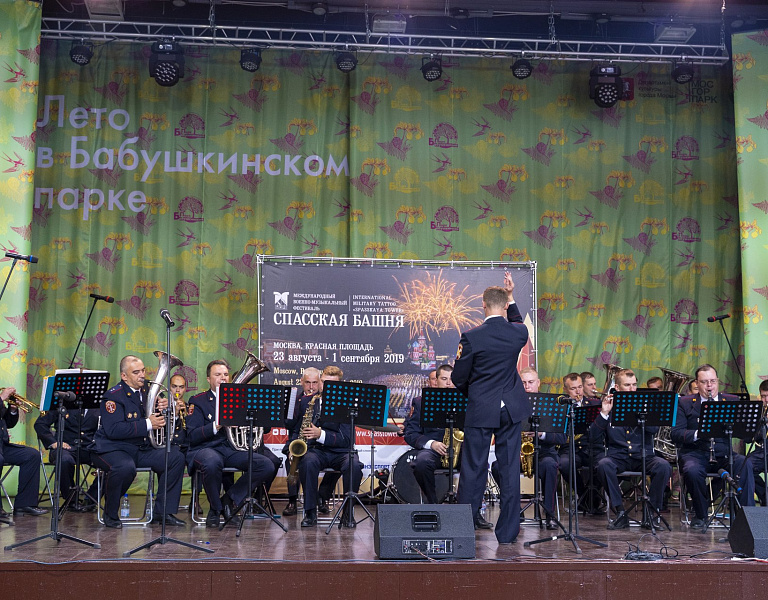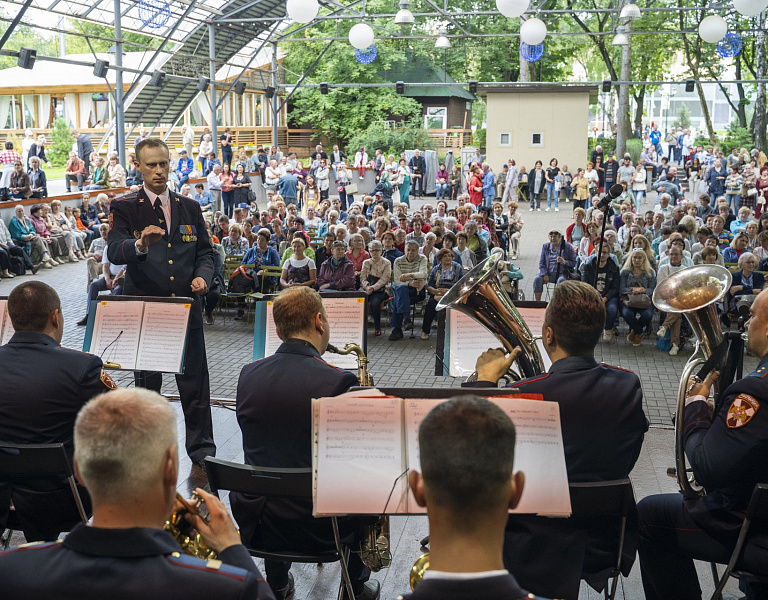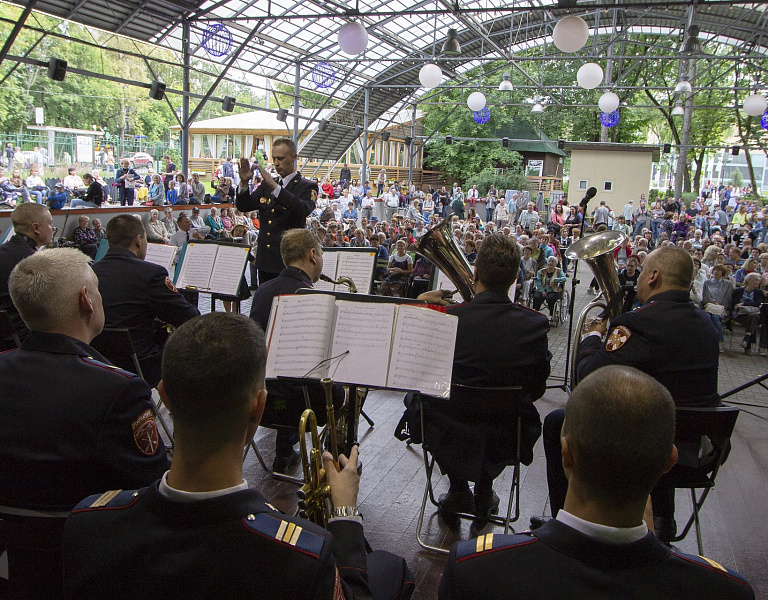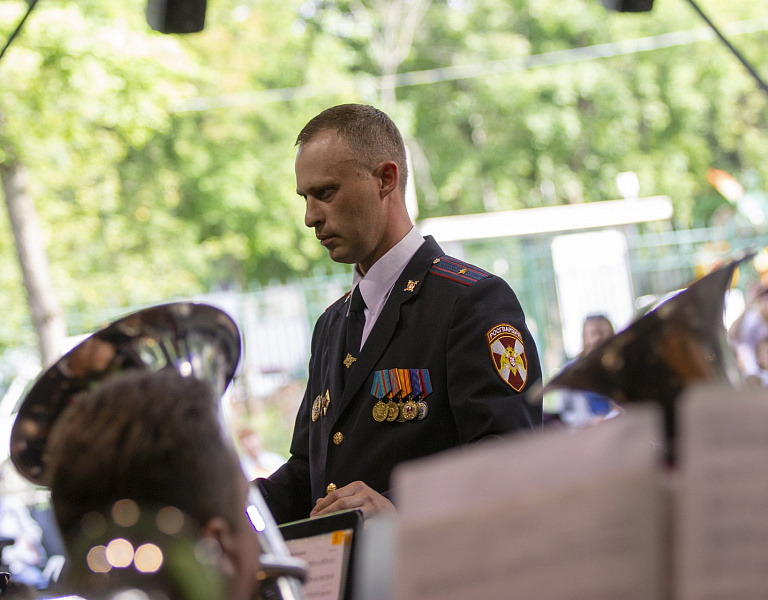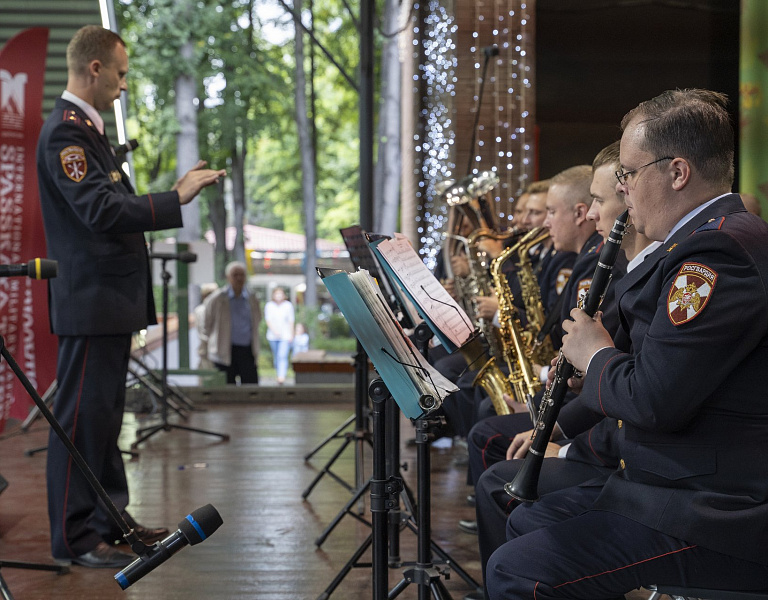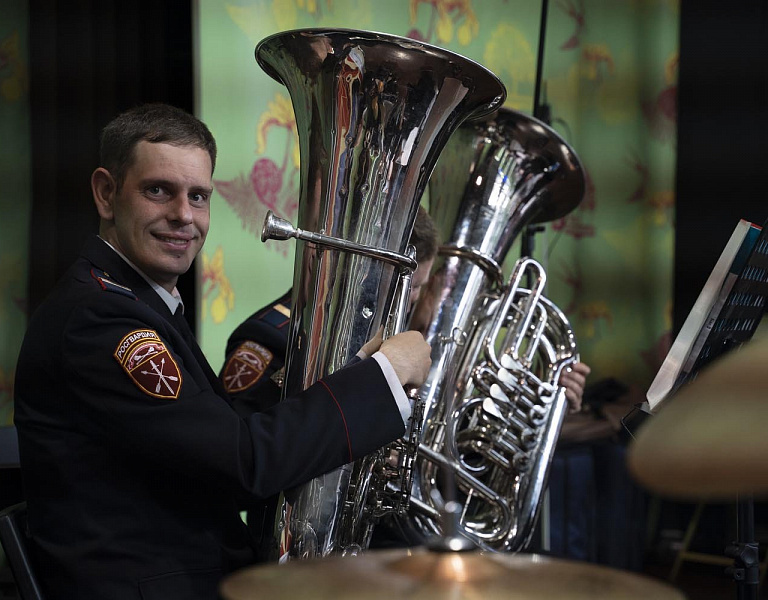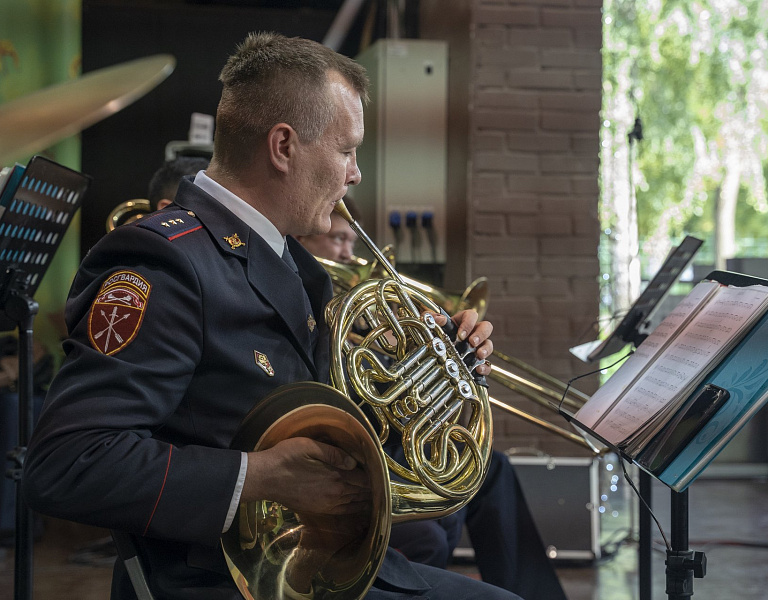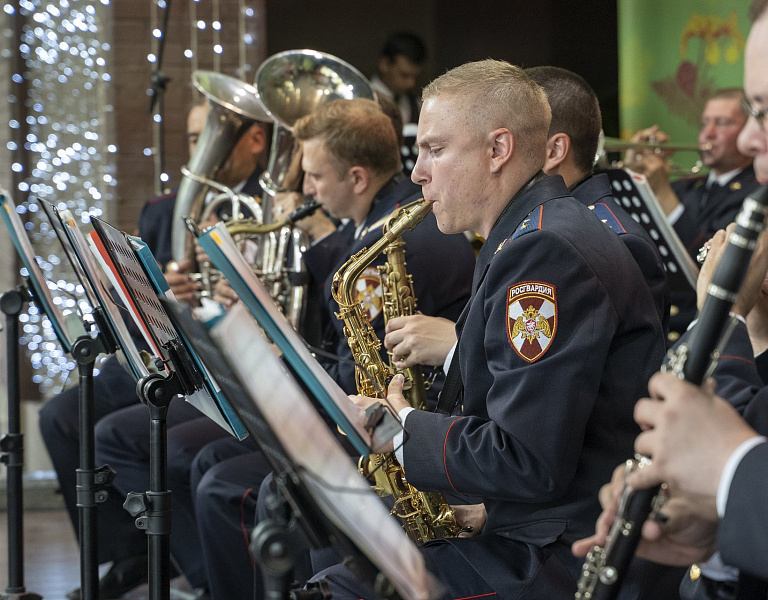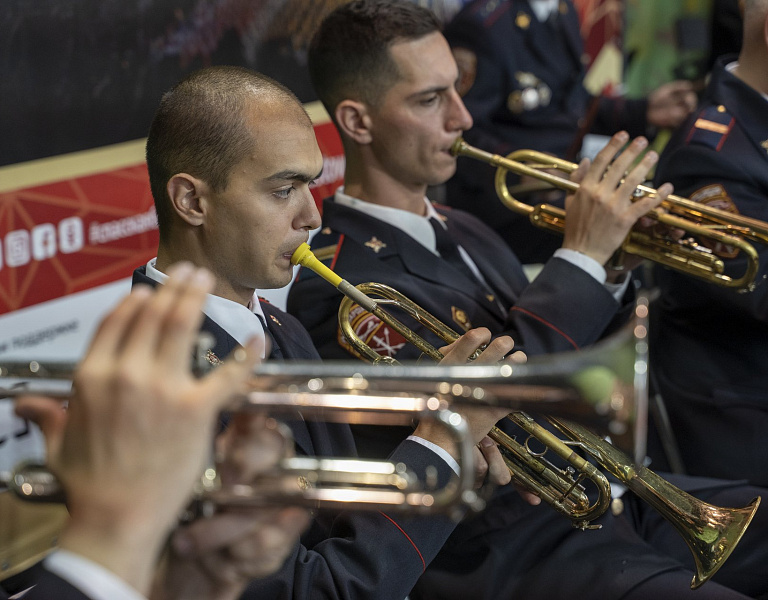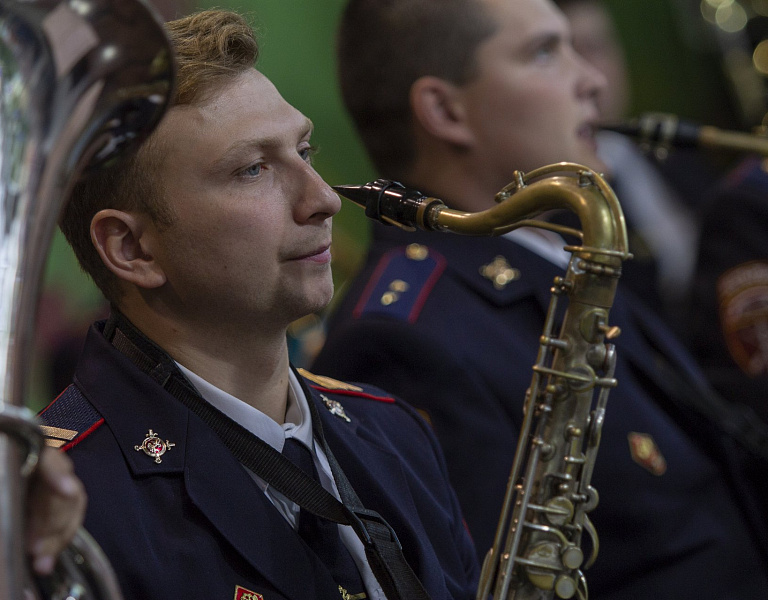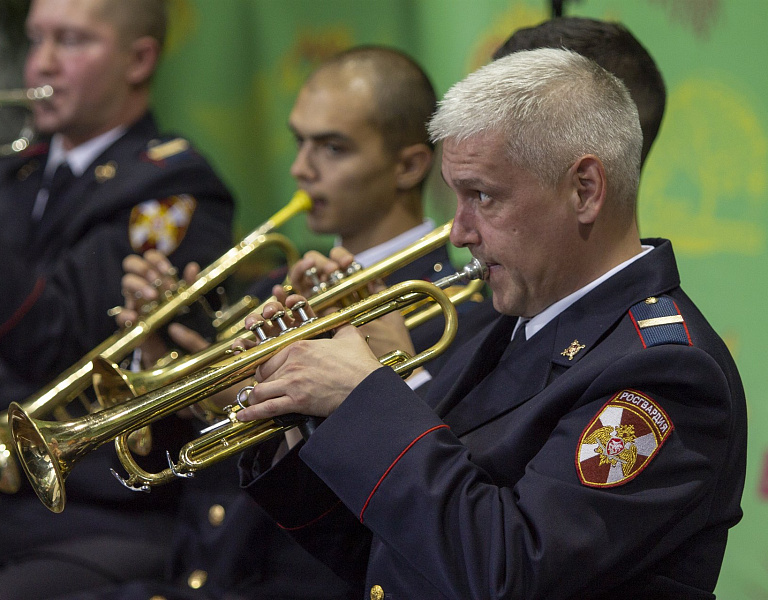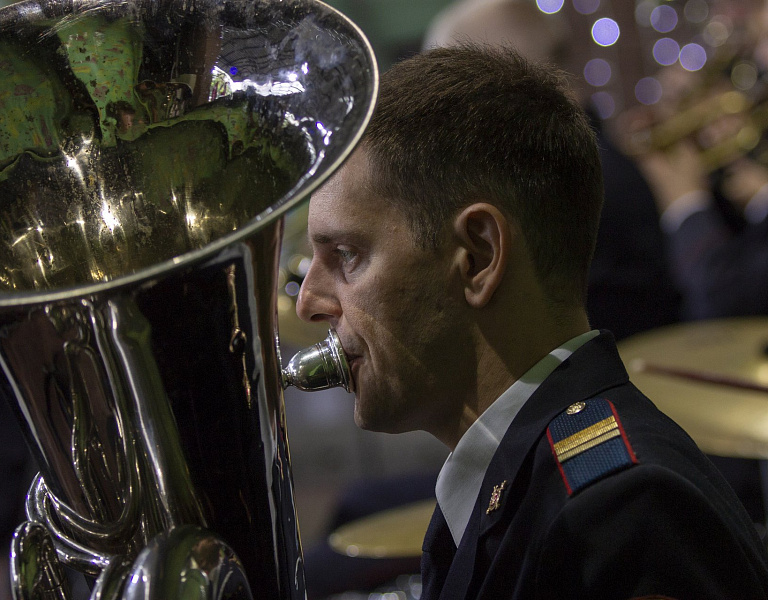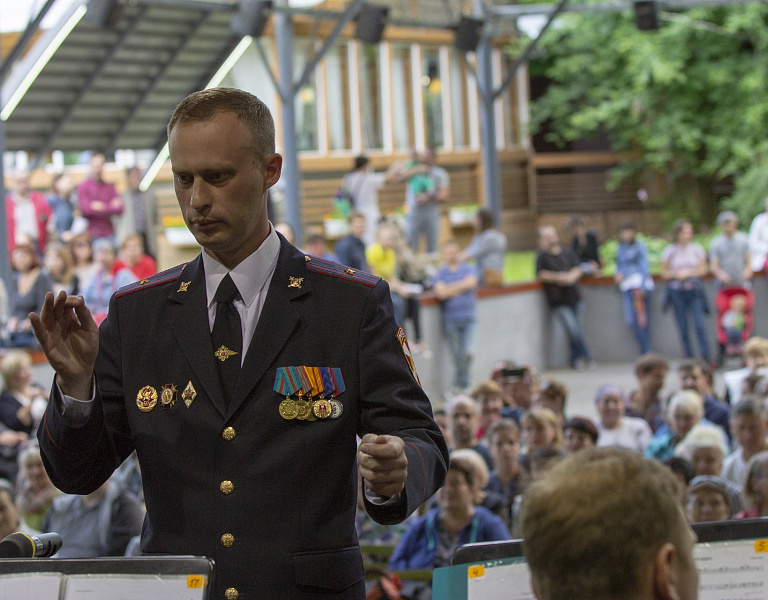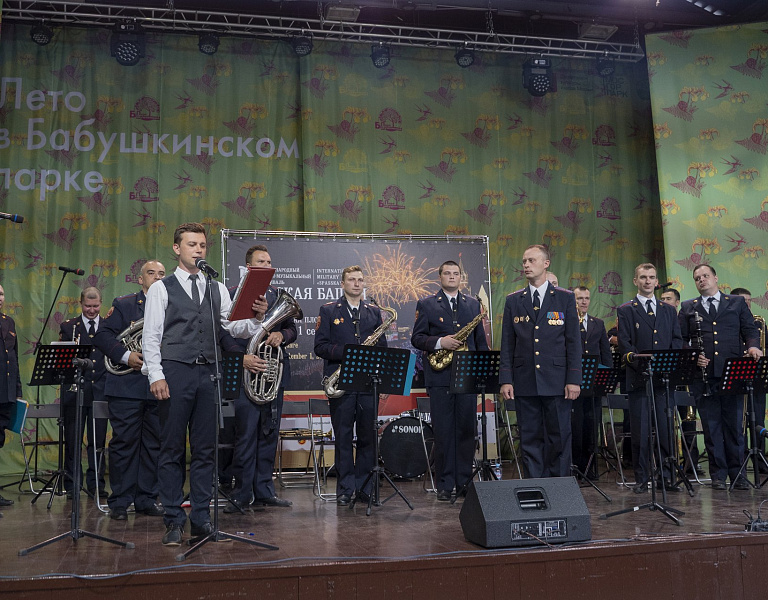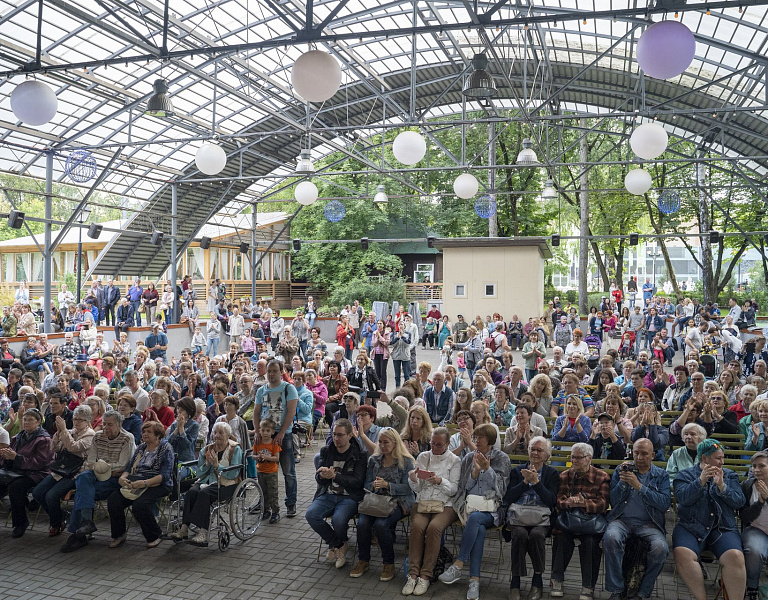This Saturday, July 20, Babushkinskiy Park of Moscow heartily welcomed the Combined Military Band of the
National Guard Forces of Russia led by Major Yuriy Kluchnikov.
It was another run of the Military Bands in the City Park, a very special project carried out
by the Directorate of the Spasskaya Tower International Military Music Festival with the support
of the Russian Ministry of Defense and Moscow’s Department of Culture.
Sounds of marches, waltzes and songs filled the air of that beautiful day in the capital. The ensemble
focused on music pieces by Russian and Soviet composers. Along with military marches they performed some
waltzes, including the world-famous On the Hills of Manchuria, a masterpiece
created
by Ilya Shatrov at the beginning of the twentieth century to honor the members of the
214th
Moksha Reserve Infantry Regiment who all fell during the Russian-Japanese war of 1905, and
Siniy
Platochek (Little Blue Scarf) by Ezhi Peterburgskiy. Written in 1940, the song became very popular
all
over the country and many of the Soviet artists included it in their repertoire. A year later,
during the Great Patriotic War, the song was performed by Lidia Ruslanova and Klavdia Shulzhenko. Each singer
suggested her own version differing from the original one. They both fitted perfectly the difficult times that our
country was going through and Red Army soldiers quickly took to singing it during the brief minutes
of rest. Nowadays we are largely familiar with Shulzhenko’s version of the song. The band also
performed Alexander Khalilov’s Subboteya, a very vibrant dance song, Artur
Polonskiy’s Blooming May,
a foxtrot composition popular on the 1940s-1950s, as well
as Novikov’s Smuglyanka. Originally dedicated to Grigoriy Kotovskiy, the hero of the
Civil War
(1918 — 1922), in 1944 the song became the symbol of all the officers and soldiers who
fearlessly fought to free Moldova during the Great Patriotic War.
The concert program included also a number of foreign compositions, including Autumn Dream, a waltz
by Archibald Joyce, Für dich, Rio Rita, a paso doble written by Enrique
Santeugini
in 1932, and Besame Mucho, a song written and composed by fifteen years old Consuelo Velazquez
in 1941. The song is so popular all around the world that it’s been listed in the
Top-10 songs of the twentieth century.
The audience was delighted with the concert receiving with great enthusiasm the contrast of marches and love
songs offered by the military musicians.




